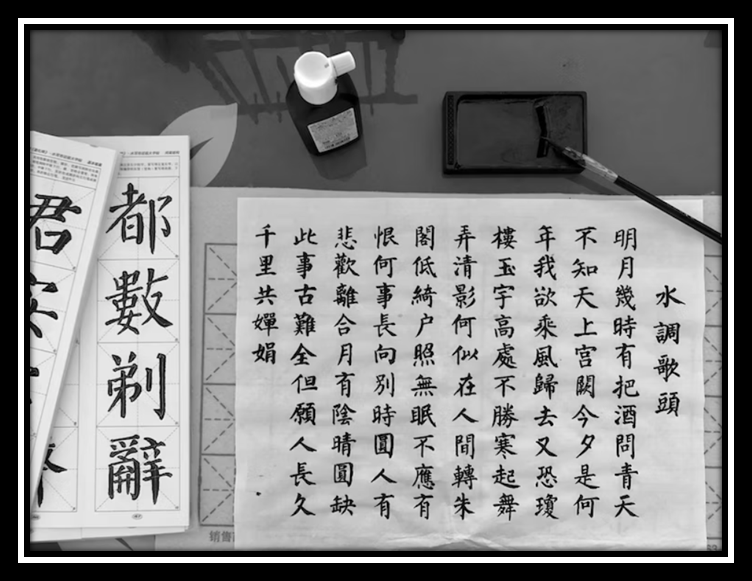Learning simplified Chinese characters is the starting point for learning Chinese and Chinese culture; Teaching Chinese characters is a basic requirement for imparting Chinese language and culture, and promoting cultural exchange between China and foreign countries.
Chinese characters are the written symbol system that records Chinese language, and are the visual manifestation of Chinese language.

It records the culture created by the Chinese nation for thousands of years, accumulates a large number of cultural classics, and gradually adapts to Chinese in long-term application, forming a relatively independent written language of Chinese, widely used in written communication, and becoming one of the most widely used languages in the world today.
We know that there are seven major dialect regions and a larger number of small dialect regions in Chinese. There are significant phonetic differences between different dialects, and it is difficult to communicate verbally between dialects such as Northern dialect and Wu, Min, and Cantonese; The language differences between different regions of Northern dialect are also very obvious.
This creates a significant gap in verbal communication between different parts of the country. Since the establishment of the People’s Republic of China, this gap has been reduced due to the government’s strong promotion of Mandarin, but it has not been completely eliminated.
Only written Chinese language written in Chinese characters can flow smoothly among the literate descendants of the Chinese people.
This indicates that up to now, Chinese characters are still suitable for China’s national conditions. Teaching Chinese characters well by Chinese language teachers and learning Chinese characters well by each student is a sacred responsibility to improve national cultural quality and consolidate national unity.
With the deepening development of China’s reform and opening up, cultural exchanges between countries and China continue to expand, and more and more foreign friends are learning Chinese and Chinese characters. It is also the responsibility of Chinese language teachers to help these friends learn Chinese and Chinese characters well.
Chinese characters are used to record Chinese morphemes. Each Chinese character roughly records the semantics and pronunciation of a monosyllabic morpheme. However, the basic syllables of Mandarin Chinese are only 415, and with the addition of four tones and neutral tones, there are only 1335. However, the number of morphemes in modern Chinese greatly exceeds this number.
So, even when the national population of over one billion people and overseas Chinese can speak Mandarin, it is impossible to abolish Chinese characters.
At present and in the foreseeable future, Chinese characters will still be the only effective textual symbol system for recording Chinese language.
The Latin alphabet in the Chinese Pinyin scheme can only be used as a tool for Chinese phonetic notation, and it is currently impossible to replace Chinese characters with it. Whether Chinese or foreign, in order to learn simplified Chinese characters, one must learn Chinese characters well, and in order to teach Chinese characters well, one must also teach them well.

Morphemes in Chinese that cannot be distinguished by pronunciation can only be distinguished by Chinese characters. Morphemes that cannot be distinguished and taught by the mouth can only be explained clearly by explaining different forms of Chinese characters; Students can only understand and master homophones correctly by learning Chinese characters with different shapes. There is no other way.
Chinese characters are self originating characters created by the Chinese people. It not only records the Chinese language and various aspects of knowledge created by the Chinese people.
Moreover, its emergence and development also embodies the intelligence and wisdom of the Chinese nation, reflecting the social customs, ethical and moral concepts, social psychology, and development process of different periods in China.
For example, the formation of characters has evolved from pictographic and referential techniques to understanding and sound, from visual representation to symbolic representation, from individual to complex forms to simplified forms, from irregular to regular, and from non-standard to standardized, all of which demonstrate the development process of Chinese thinking from concrete to abstract, from simple to complex, and from seeking rules.
Careful examination of the emergence and evolution of various Chinese characters also reflects the wisdom and development process of the Chinese people.
All of this indicates that a history of the development of Chinese characters reflects the development of Chinese society and the wisdom of the Chinese people.
The process of learning simplified Chinese characters is also the process of gradually understanding Chinese culture; The process of teaching Chinese characters to students is also the process of imparting Chinese culture.
Therefore, it is not difficult for us to understand the meaning of Chinese characters.
There are many dialects in modern Chinese, with significant phonetic differences. On the one hand, Mandarin will gradually be promoted; On the other hand, dialects will always exist. Although there are various differences in pronunciation, it does not hinder written communication.
The super dialectal nature of Chinese characters has made it the only communication tool that has been widely used throughout China for thousands of years. It has played a role in constraining dialects, unifying the nation, and forming an unprecedented scale of Chinese character culture.
People from different dialect regions (including overseas Chinese), although often unable to communicate, can use Chinese characters to communicate, understand the same newspapers, books, and magazines, and use commonly used words expressed in Chinese characters.
Today, the role of Chinese characters in maintaining national and national unity, disseminating government will, utilizing and disseminating modern economic and cultural information, and maintaining unity between Chinese people and ethnic Chinese at home and abroad cannot be underestimated.
